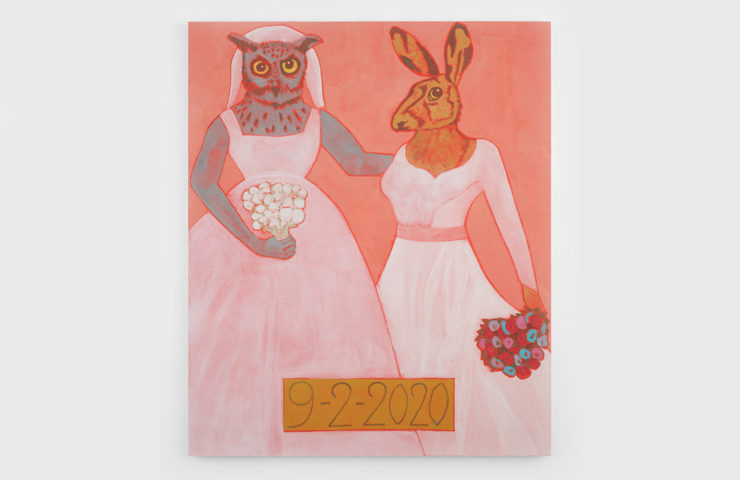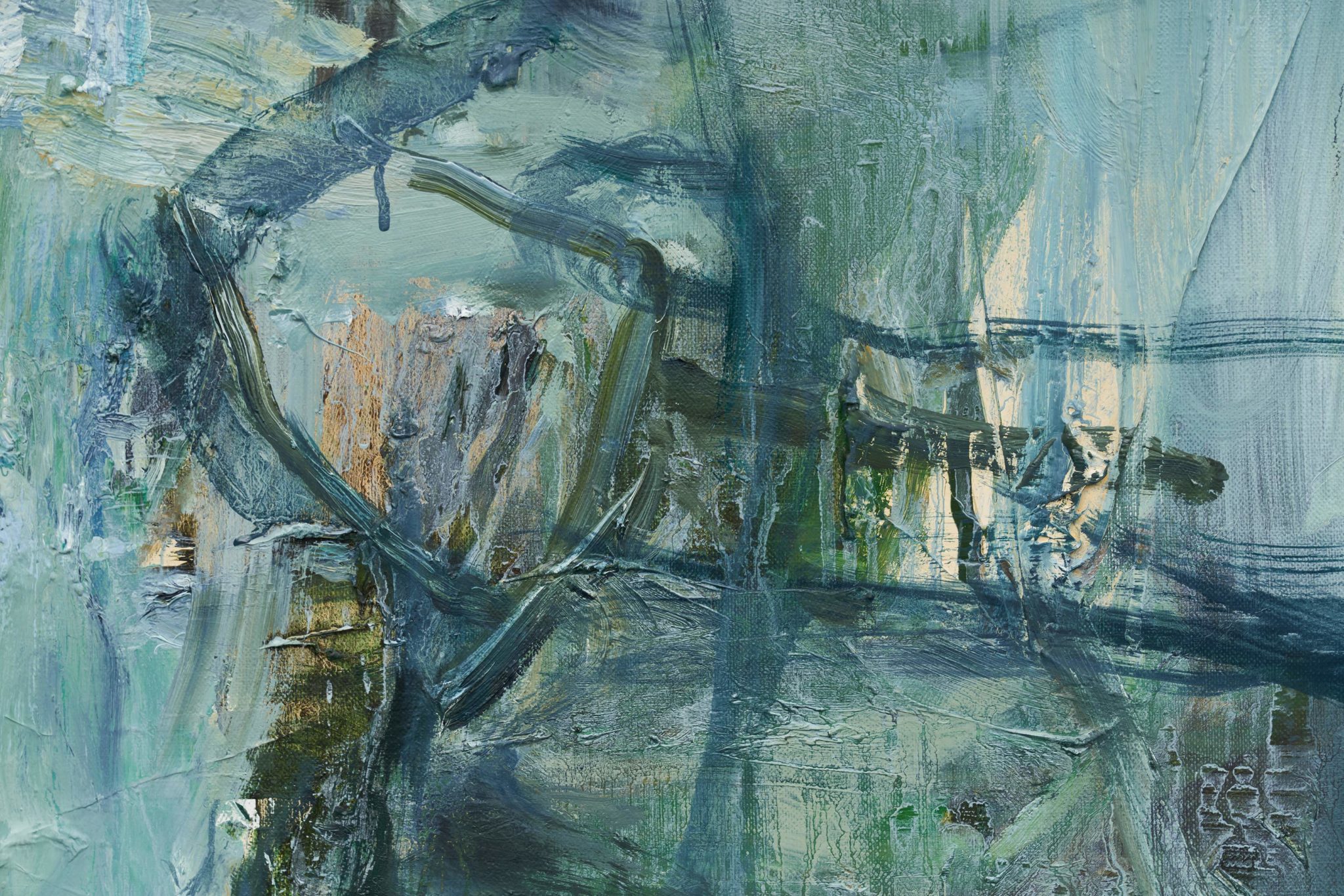Tu Hongtao
Stream-Fallen Leaves-Deep Valley, 2019–20
First, painting is being in awe, in awe of mystical relationships. Man-made relationships also exist, but they are extremely minute. We have not changed the basic structure of nature, only a part within this structure. Contemporary painting can be very tactful in society, unlike a slogan. It may not resolve specific problems and it may not be practical, but it can bring together feelings and spirits.
—Tu Hongtao, 2011
Tu Hongtao’s recent paintings have emerged from the desire to express, in the artist’s words, the “deep impression” of a landscape—to evoke memory, place, and physical sensations through a gestural visual language. Stream-Fallen Leaves-Deep Valley (2019–20) reflects the dynamic mountains and valleys which surround Tu’s studio on the outskirts of Chengdu. The painting juxtaposes an emotive stillness, as experienced by walking through a landscape, with the physicality of nature’s constant movement—rendered through the shift from fields of ochre, green, and pale blue into an energetic center, where brushstrokes overlap and intersect. Tu is inspired by traditional Chinese landscape artists such as Dong Qichang (1555–1636), as well as more recent precedents including David Hockney and Cy Twombly. With its calligraphic lines and semi-representational allusions, Stream-Fallen Leaves-Deep Valley is characteristic of this meeting ground of influences. Lévy Gorvy’s first European exhibition with acclaimed Chinese artist, Twisting and Turning, opens in London on October 2.
Tu Hongtao
Stream-Fallen Leaves-Deep Valley
2019–20
Oil on canvas
51 3/16 x 39 3/8 inches (130 x 100 cm)
© Tu Hongtao
-

Günther Uecker
Lichtbogen, 2020
-

Tu Hongtao
Stream-Fallen Leaves-Deep Valley, 2019–20
-

Jutta Koether
Need You Everyday (Bluesed Grid Series, Flower Theme), 2020
-

Francesco Clemente
9-2-2020, The Brides, 2020
-

Pat Steir
Untitled XVIII, 2020 (Taipei), 2020
-

Mickalene Thomas
Jet Blue #14, 2020








